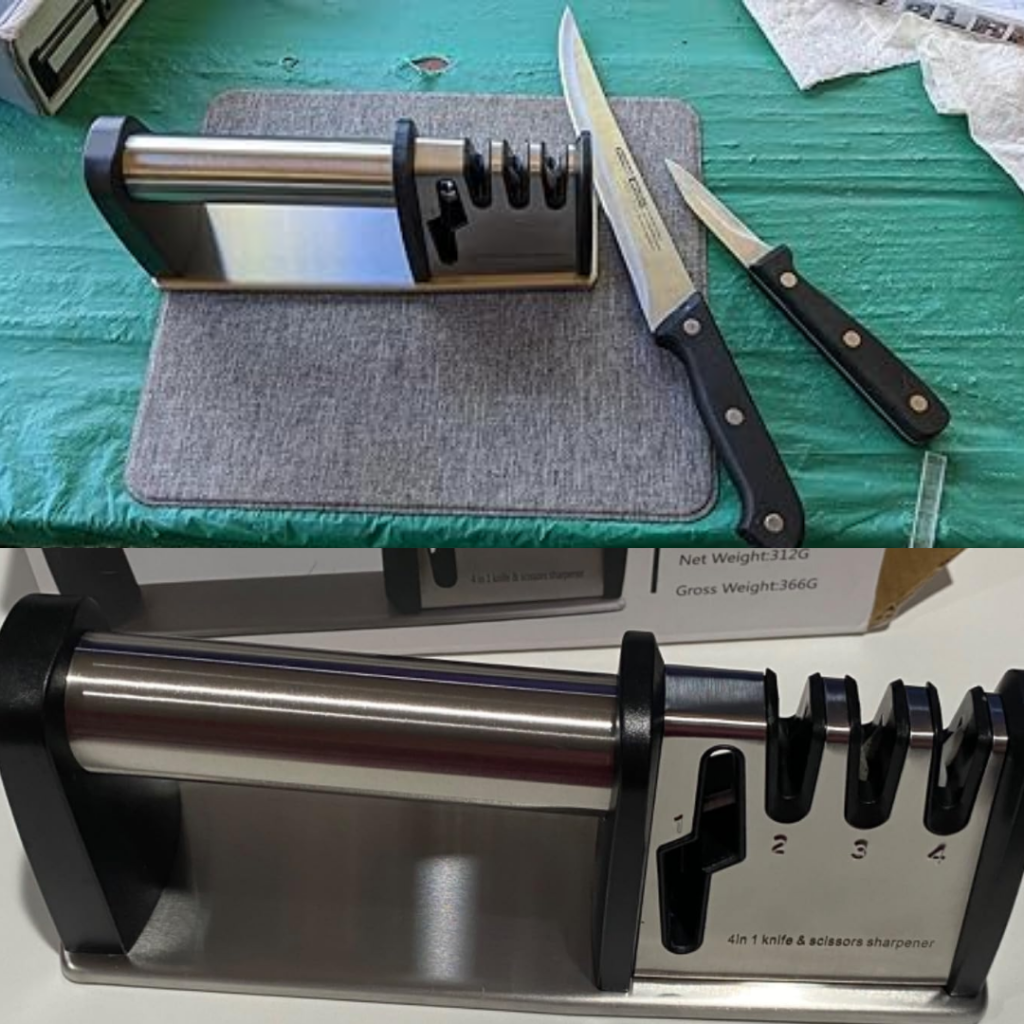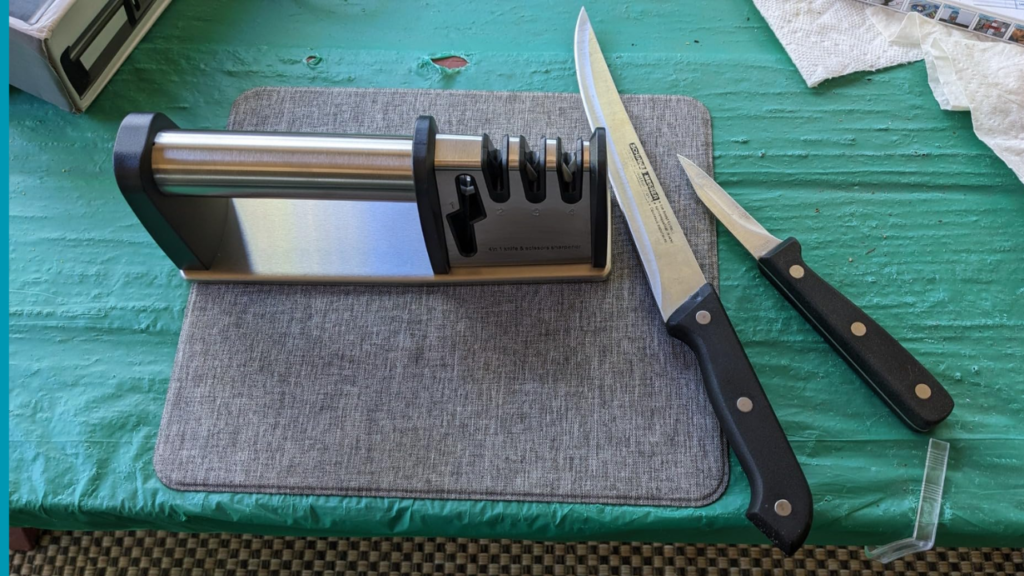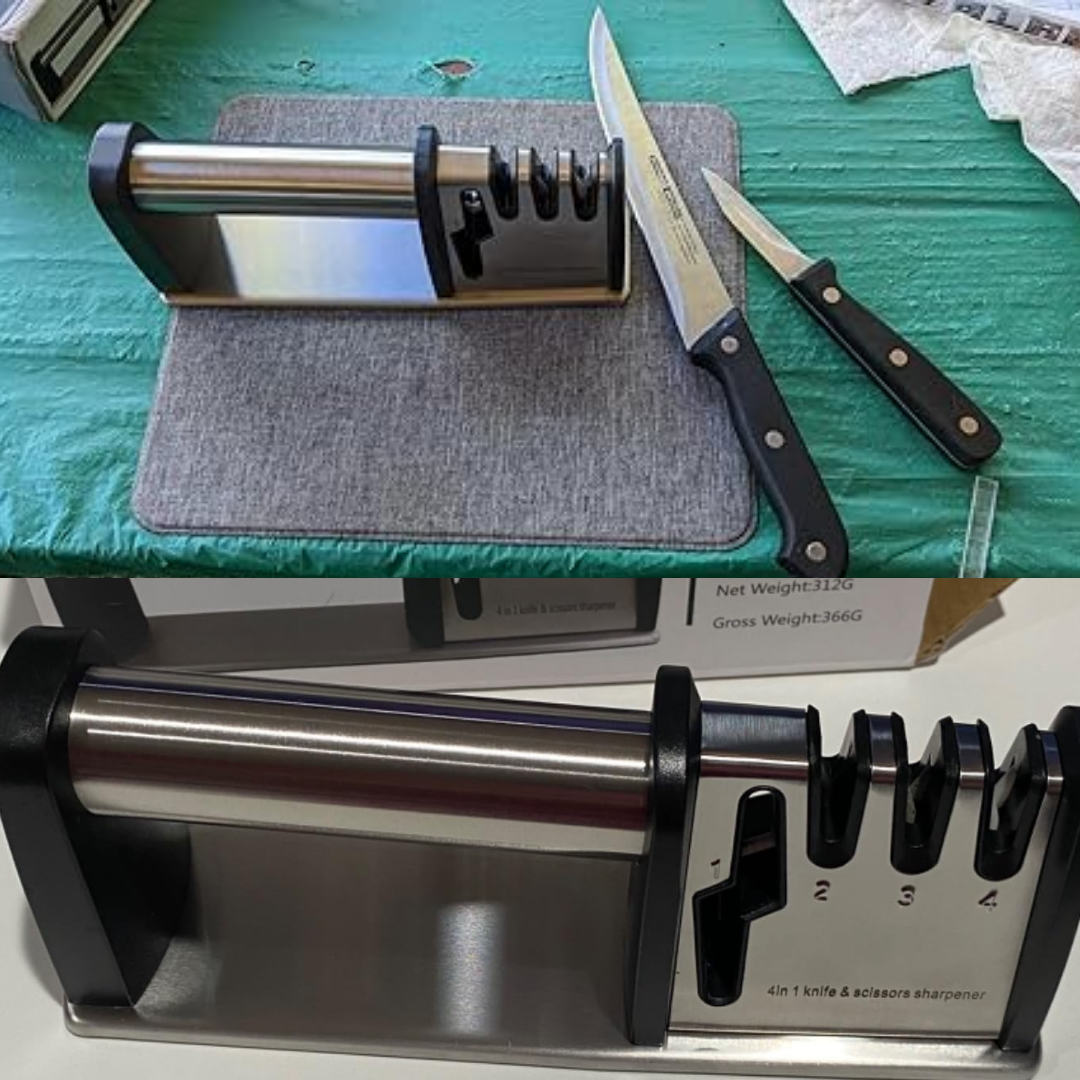Ever tried slicing meat or cheese with a dull blade? It’s a hassle, jagged cuts, extra effort, and nothing turns out right. I’ve been there, struggling with a slicer that wouldn’t cut smoothly. But once I learned how to sharpen a slicer blade, everything changed, clean cuts, less work, and a better slicing experience. In this guide, I’ll show you how to sharpen your meat slicer blade step by step. How To Sharpen Slicer Blade.
Why It’s Important to Keep Your Meat Slicer Blade Sharp
A sharp blade makes slicing easy. It gives you clean, even cuts with no tearing. If you’ve ever used a dull slicer, you know how frustrating it is. A sharp blade glides smoothly, making food prep quick and simple.
It also keeps food looking and tasting better. A dull blade squashes instead of slicing, ruining the texture. Meats, cheeses, and veggies stay fresh and neat when cut with a sharp blade. How To Sharpen Slicer Blade.
A sharp blade is also safer. Dull ones require more force, which can lead to slips and cuts. When your blade is sharp, it works for you, reducing effort and risk.
Keeping your blade sharp also helps it last longer. It prevents wear and tear, saving you money on replacements. A sharp blade puts less strain on the slicer, keeping the motor running well.
With a sharp slicer blade, you get better results, work faster, and make your slicer last longer. It’s a simple step that makes a big difference! How To Sharpen Slicer Blade.

Tools and Materials Needed
Before sharpening your slicer blade, gather your tools. Having everything ready makes the job easy and safe.
Suppose your slicer has a built-in sharpener; great! It makes sharpening simple. If not, use a handheld sharpening stone made for metal blades.
You’ll also need lubricating oil to keep the blade running smoothly. A soft cloth and cleaning supplies help remove grease and food bits before and after sharpening.
Safety matters! Wear protective gloves to avoid cuts and safety glasses to shield your eyes from tiny metal shavings.
Step-by-Step Guide: How to Sharpen a Meat Slicer Blade
Sharpening your slicer blade is simple when you follow the right steps. Let’s break it down.
A. Getting the Slicer Ready
First, unplug the slicer to stay safe.
Next, clean the blade well. Wipe off any food or grease. A clean blade sharpens better.
Now, check for damage. If the blade is cracked or too worn, sharpening won’twill not help; you may need a new one.
B. Using a Built-In Sharpener
If your slicer has a built-in sharpener, it’s easy to set up so it lines up with the blade.
Next, please turn it on and let it run for a few seconds. This evens out the edge.
Once done, test the blade by slicing something. If it cuts smoothly, you’re good to go. Finally, wipe it clean before using it.
C. Using a Handheld Sharpening Stone
No built-in sharpener? No worries! First, hold the blade steady so it doesn’t move.
Then, angle the sharpening stone (around 15-20 degrees). This helps create a sharp edge.
Now, gently slide the stone along the blade. Keep it even, and don’t press too hard.
When done, wipe the blade and test it. If it cuts cleanly, you’re all set!

Easy Ways to Keep Your Slicer Blade Sharp
Want your slicer to work like new? Keep the blade sharp with these simple steps!
1. Clean After Every Use
After slicing, wipe the blade with a damp cloth and mild soap. Leftover food and grease make it dull fast. A clean blade cuts better and lasts longer.
2. Store It Safely
Don’t toss your slicer in a drawer where the blade can hit other things. Instead, could you keep it in a safe spot? If it has a cover, use it to prevent damage.
3. Sharpen Often
How often should you sharpen it? If you use it daily, do it every few weeks. If not, once a month should be fine. A sharp blade makes slicing easy!
4. Replace When Needed
Blades don’t last forever. If sharpening doesn’t help or the edge looks rough, get a new one. A fresh blade makes slicing smooth and effortless!
Common Mistakes to Avoid While Sharpening
Sharpening a slicer blade is easy, but small mistakes can make it harder or unsafe. Watch out for these common errors:
Pressing Too Hard
Pushing too hard will not make the blade sharper; it will just wear it out faster. A light touch is best. Think of sharpening a pencil—press too hard, and you break the tip instead of making it sharp.
Not Cleaning the Blade First
Sharpening a dirty blade is like painting over dust—it won’t work well. Grease, food bits, or rust can get in the way and even damage the blade.
Forgetting to Test Sharpness
Ever sharpened a blade, then tried to use it—only to find it’s still dull? It happens! Always test before slicing. A sharp blade should glide through food. If you’re forcing it, it needs more sharpening.
Ignoring Safety
The blades are sharp! (At least, they should be.) It’s easy to forget safety, but a small slip can lead to a painful cut.
FAQs
How often should I sharpen my meat slicer blade?
It depends on how much you use it! If you slice food daily, sharpen it every two weeks. If you use it less, once a month should do. A simple trick—if slicing feels tough, it’s time to sharpen!
Can I use any sharpening stone for my slicer blade?
No, not all stones work. Use one made for metal blades. Even better, check your slicer’s manual to find the right one. The wrong stone can wear out your blade too fast.
What if my blade is still dull after sharpening?
Check your steps! Was the blade clean before sharpening? Did you use the right angle and light pressure? If it’s still dull, the blade may be too old and need replacing.
Is it better to sharpen or replace a dull blade?
Sharpening helps, but only for so long. If you’ve sharpened it a few times and it still won’t cut smoothly, it’s best to replace it. A fresh blade makes slicing fast and easy.
Can I use oil when sharpening my slicer blade?
Yes! A few drops of oil keep the blade smooth and prevent damage. Just wipe off the extra oil before using the slicer.
Conclusion: Keep Your Slicer Blade Sharp and Slicing Easy
A sharp blade makes slicing simple. It gives smooth, clean cuts with little effort. No more jagged edges or messy slices! Plus, it keeps you safe since you won’t have to push too hard.
Taking care of your slicer is easy. Clean the blade, sharpen it when needed, and store it safely. A little effort goes a long way!
Have you ever tried sharpening your slicer? Let me know how it went! Drop your questions or tips in the comments—I’d love to hear from you.
Hi, I’m Scott Fischer, the voice behind SliceItRight. My passion for food started in my grandmother’s kitchen, where I learned the art of slicing, dicing, and creating delicious meals. Over the years, I’ve explored everything from the perfect kitchen gadgets to mastering culinary techniques, and I’m here to share all of it with you. Whether you’re a beginner or an experienced home chef, my goal is to make cooking easier, more enjoyable, and a lot more fun. So, let’s slice it right and cook up something amazing together!
